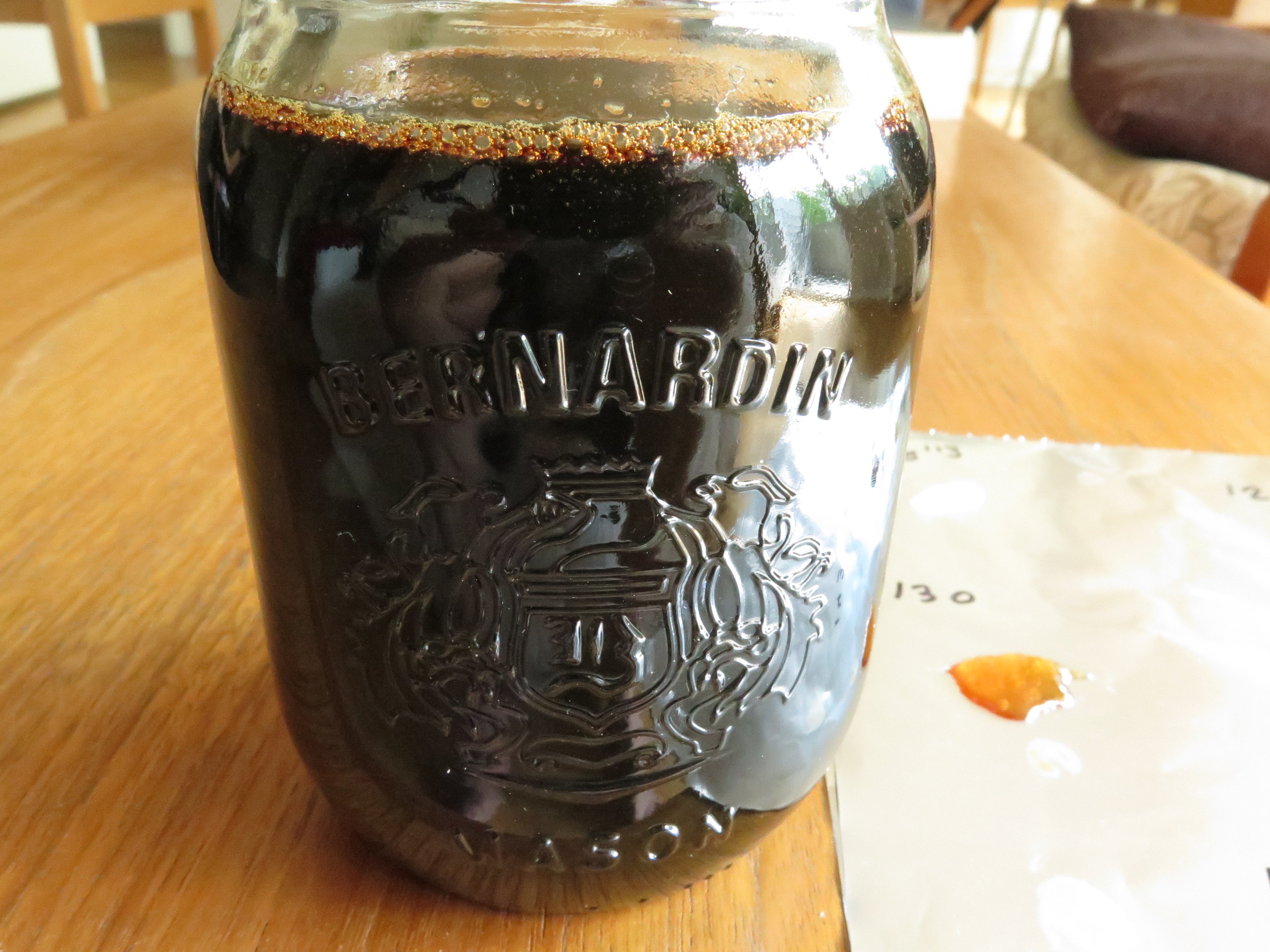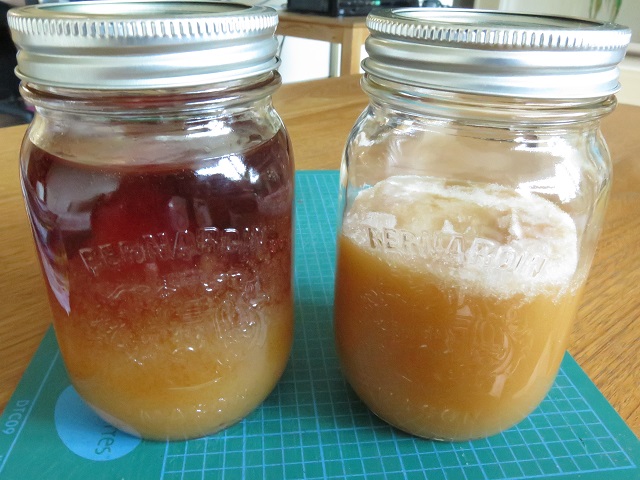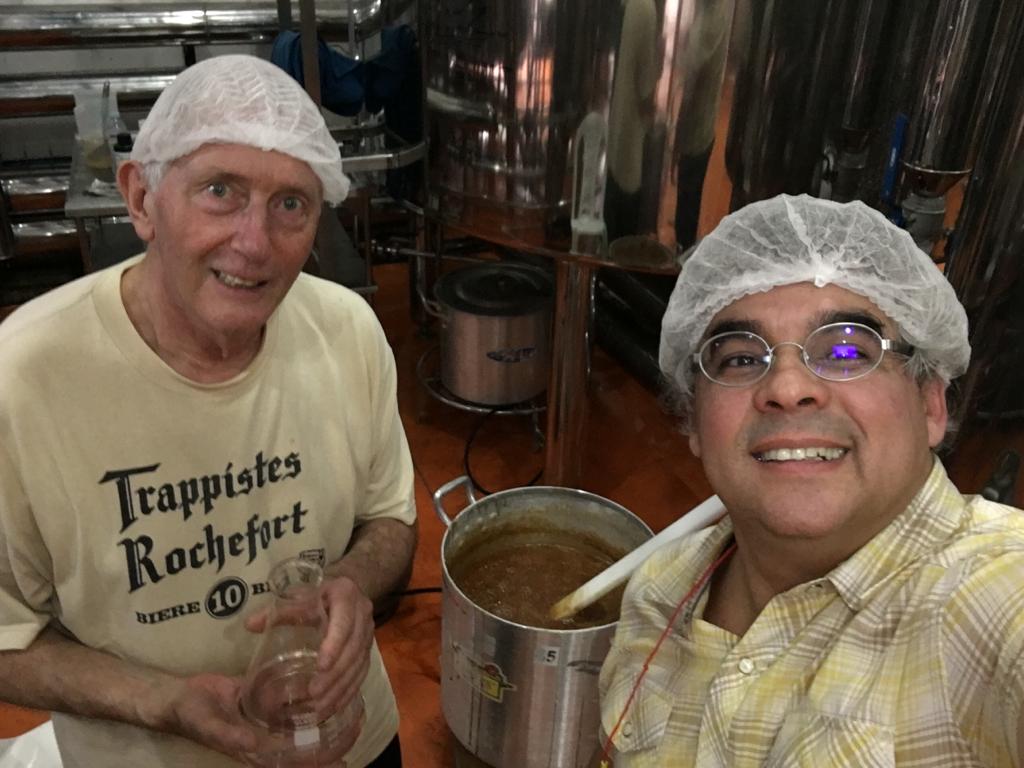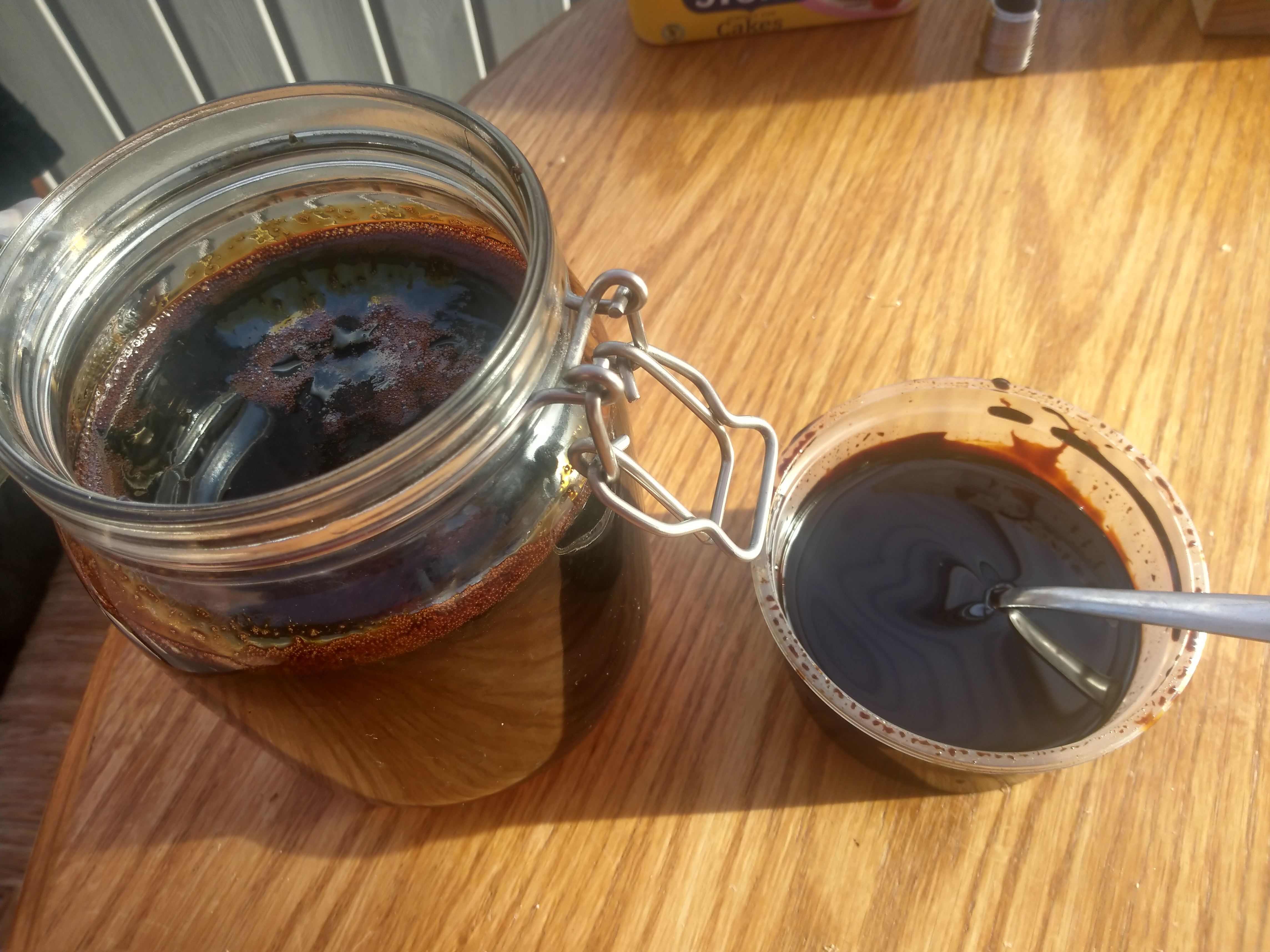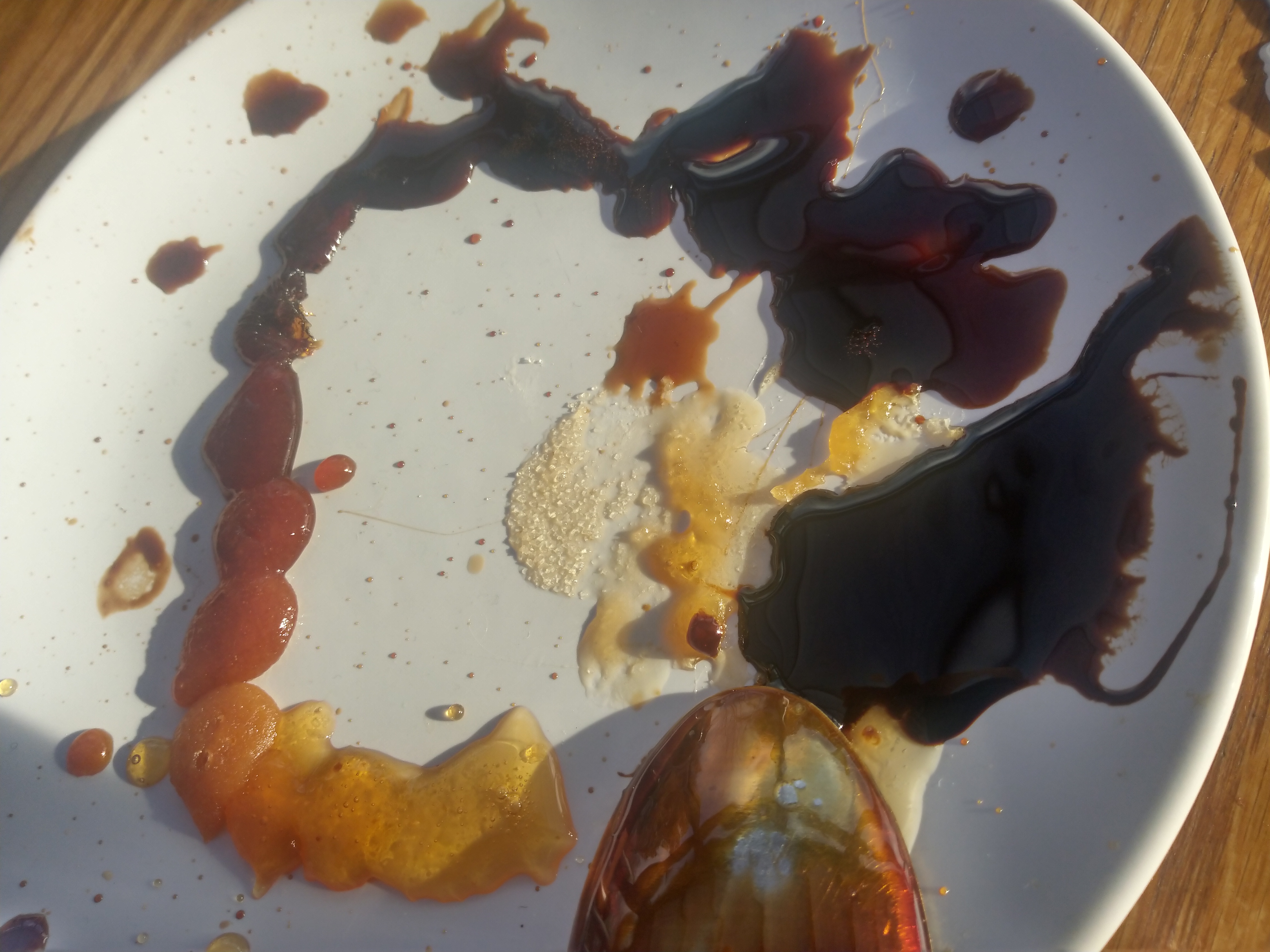Ok, so couldn't get refined cane sugar so I ditched my plan fora side by side science tastic experiment and went with my usual cooks approach mixing educated guesses with "sensory data". (Eyes and nose to non scientists.
Probably because it was unrefined there were some problems with it foaming and recrystaizing at about 260 as you can see at the beige droplet. I added some cold water and stirred and it cleared as it came back up to temperature.
Fructose starts to caramalise much earlier than glucose which starts at around 260 and as this is the point at which I observed the most change I decided to keep cooling with water and reheating to around this point to avoid burnt flavours and coax out as much flavour as possible constantly smirking and tasting the syrup to avoid burnt flavours. As soon as I detected harsh notes I added water taking it back to somewhere around 240.
Highest i went up to was around 275 on the second reheat.
Plum gave way to cherry/maraschino which have way to a woody smokiness which reminded me of childhood saunas in Finland.
Scared of making the same mistake as yesterday I would add water again and again to take the temp back down, but all stages of heating changed the flavour.
Finally I percieved that the plum flavour was disappearing so i stopped, but when I added the syrup toa little water and tasted it out was still there in a big way along with the woodier notes and some inviting sharpness.
Reassured that it wasn't burning I took it back up to about 270 and dropped it to 240 again. In all it was probably about6 cycles. Tastes pretty great. Looks similar to the double cooked recipe that ended up too burnt tasting but is more translucent and red rather than brown/black.
Also mixed both syrups in water which is interesting. The burnt sugar as an interesting edge that might do well in a porter or stout replacing black malt.
View attachment 596105 View attachment 596106





























![Craft A Brew - Safale BE-256 Yeast - Fermentis - Belgian Ale Dry Yeast - For Belgian & Strong Ales - Ingredients for Home Brewing - Beer Making Supplies - [3 Pack]](https://m.media-amazon.com/images/I/51bcKEwQmWL._SL500_.jpg)




























